facial surgeries

facial trauma / facial bone fracture surgery
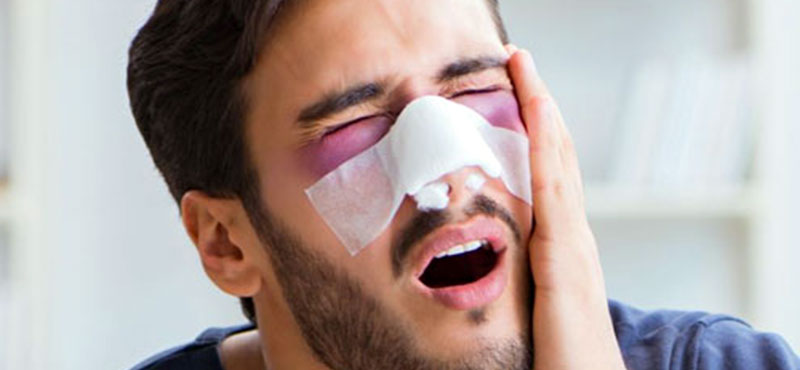
Facial Trauma or Maxillofacial Trauma
A physical damage or injury to the face is called Facial Trauma or Maxillofacial Trauma. Burns, lacerations, bruises are soft tissue damages. Also includes nasal bone damages, jaw fractures, eye injuries, sports injuries etc.
The main cause of facial trauma are road accidents due to drunk and drive, not adhering safety rules, not wearing safety equipments, sports, industrial accidents, falls, interpersonal violence etc.
Facial injuries can cause dislocation of jaws, damages to the bone and tissue, loss of function, severe bleeding, severe breathing difficulty, loss of vision, loss of consciousness etc are sometimes life threatening.
Facial trauma care and surgeries for facial trauma are undertaken at our hospital.
rhinoplasty / nose correction
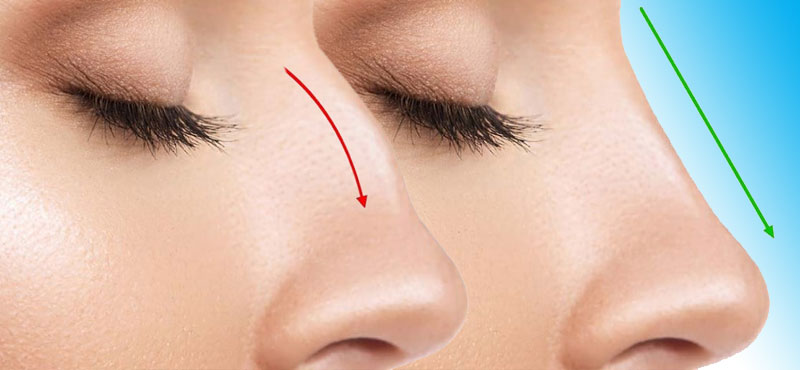
Rhinoplasty or Nosejob:
Rhinoplasty or Nose job is surgically altering the shape of the nose by restructuring the bone or cartilage. Nowadays Rhinoplasty is one of the most common cosmetic surgeries reported across the world.
Why Rhinoplasty?
People are preferring rhinoplasty for fulfilling their aesthetic desire sometimes and some are getting rhinoplasty after an injury /damage to their nose. Rhinoplasty improves the appearance as well as function of the nose. Occasionally some patients may not get satisfied with the result. In that case the candidates need to wait till the surgery done nose is fully healed.
cleft lip & palate surgeries
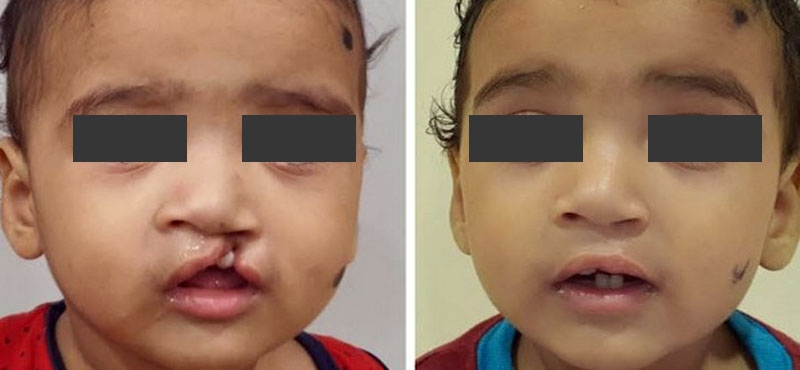
Cleft Lip and Palate
Cleft lip and cleft palate are born deformities in the face and mouth of a child. It occurs in the mother’s womb very early in pregnancy while the baby is under development. When the tissues are improperly joins together, results in cleft.
Causes of Cleft Lip and Palate
In general, the causes of cleft lip are not yet known. Hence this deformity cannot be stopped. It is believed that is due to genetic and environmental reasons. But greater chances of cleft found in siblings of parents or relatives who had the problem.
In some cases, it is found that, mothers who had undergone medication for cancer, arthritis and psoriasis had given birth to children with cleft or palate or both deformities.
Mothers with vitamin deficiency, smoking / drugs during pregnancy are also considered as reasons to give birth to a cleft type baby.
Treatment for Cleft:
Depending on the size and type of the cleft, it may require more than one surgery. The first surgery is done by the age of 3 months. The second surgery is usually done at the age of 6 months. Around half the numbers of cleft palate children need additional surgeries to improve their speech, appearance of the lip and nose etc.
oral cancer surgeries
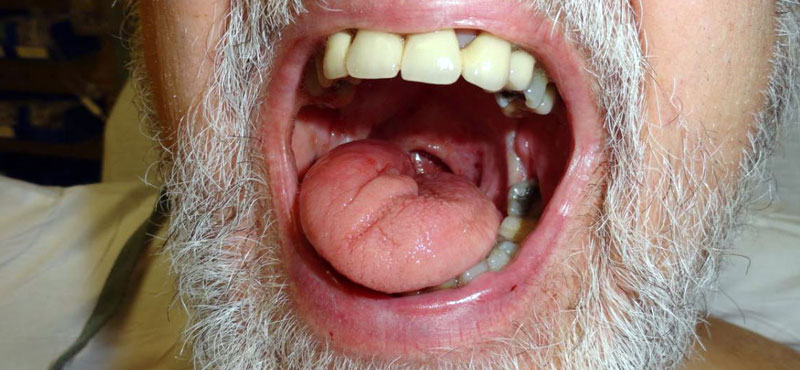
Oral Cancer Surgeries:
Surgery is a general treatment to cure oral cancer. But in severe or complicated cases surgery can’t remove oral cancer. Good body health is necessary as part of the preparation for surgery. In some cases the spreading of cancer cells may go uncontrollable. Those cases require reconstructive surgery.
Types of Oral Cancer Surgery:
The type of surgery depends on the patient’s overall health and severity of cancer. You will have one or more of the following surgeries.
- Primary tumor resection: Removal of cancer tissue along with a little part of normal tissue
- Mandible resection: Removing jaw bone if the cancer is in the jaw bone.
- Maxillectormy: Removal of part of the cancer affected roof of maxilla if the roof is affected by cancer
- Mohs micrographic surgery: This method is used to remove cancer if your lip is affected.
- Glossectomy: Removal of tongue if the tongue is affected
- Neck dissection: Surgery to remove cancer if cancer affected at neck’s lymph nodes
- Tracheostomy: Surgery if breathing difficulty arises.
- Feeding tube placement: Making your eating convenient.
tmj surgery

Temperomandibular Joint:
Temperomandibular joint is where the jaw joins to the temporal bones of the skull. It lets the movement of your jaw up and down and side to side, so that you are able to talk, chew etc.
A disorder with the jaw and the muscle of the face is known as temperomandibular disorder (TMD). But the truth is, Till yet the cause of TMD is unknown.
It is believed that due to problems with the muscles of the jaw or may be with the parts of the joint itself. Other causes may be
- Heavy blow
- Teeth gridning or clenching
- Movement of sensitive cushion or disc between the ball and the socket of the joint
- Arthritis
- Stress
Common Symptoms:
- Severe pain in the face, teeth, jaw joint, neck and shoulders, in and around the ear during the jaw movement.
- Sometimes, pain may last many years.
- Jaws may get stuck or lock.
- Clicking sound may be heard during jaw movement
- Face seemed to be get tired
- Swelling on the sides of the face
Treatment:
If medications or other traditional treatments have failed to work, your dentist will suggest you to wear a night guard. All needed dental treatment to correct the bite will be done by your dentist. Low level laser therapy trial will be done to check if it is effective. When all these efforts are unfruitful, TMD surgery is the final effort of your dentist.
tongue tie (ankyloglossia) corrections
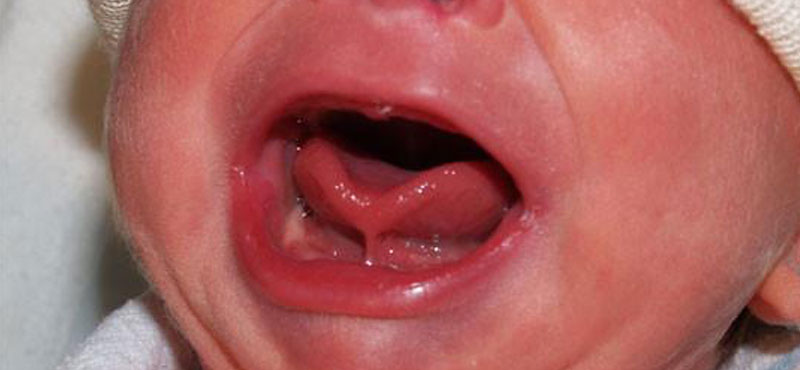
Tongue tie is a physical deformity that limits the movement of the tongue.
Kids with this condition often experience difficulties such as inability to chew, eat age-appropriate food and delayed speech development.
Symptoms and side effects:
For infants: Impacts on milk supply, termination of breast feeding, baby failing to thrive, poor bonding between baby and mother, sleep deprivation, problems with introducing solids, gagging etc.
Children: Inability to chew age appropriate food, Digestion equals growth and development concerns, gagging, choking or vomiting foods, difficulty in cleaning teeth with tongue, dental problems etc.
Adults: Inability to open mouth wide, Inability to speck clearly, protrusion of lower jaws, prognathism, social situations, eating out, kissing, relationship concerns, sensitive about personal appearance etc.
Tongue tie (frenectomy) surgery for Adults:
Tongue tie should be corrected at the early stage. Don’t delay to get tongue tie surgery. The sooner the tongue tie is corrected, the lesser the possibilities for side effects. The surgery involves cutting the lingual frenulum.
Frenulum is a soft fold of mucous membrane that anchors your tongue on the mouth. It standardizes the movement of tongue.
Frenuloplasty is an extensive surgery needed if the frenulum is very thick.
Wisdom tooth removal
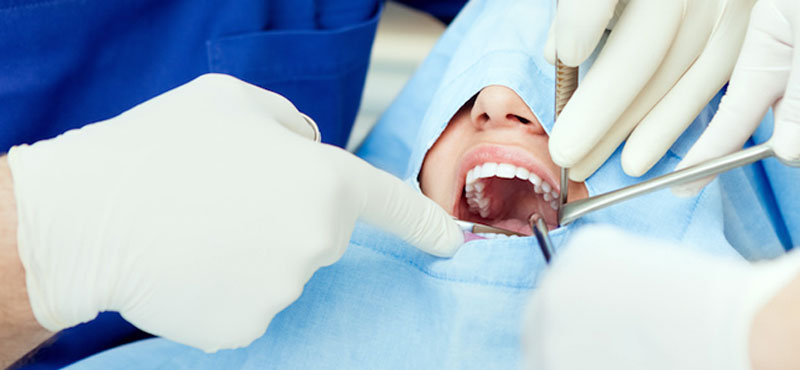
Wisdom tooth removal
The teeth that erupt usually in between 17 and 26 at the back of your mouth that can be visible with X-rays are third set of molars are otherwise called wisdom teeth. The growth process may generate mild or throbbing pain and that may be the reason you are approaching an oral surgeon to address it. Your surgeon will suggest the removal of this tooth; because…
- They are impacted, get trapped in jaw bone or gums and may have pain.
- They develop in wrong position and push other teeth
- The jaw has no room to accommodate additional molars
- It may be located inaccessibly for your brush or floss
The surgery will usually take 30 to 45 minutes and you will be provided with quick wound healing instructions and medication.
dental cyst removal
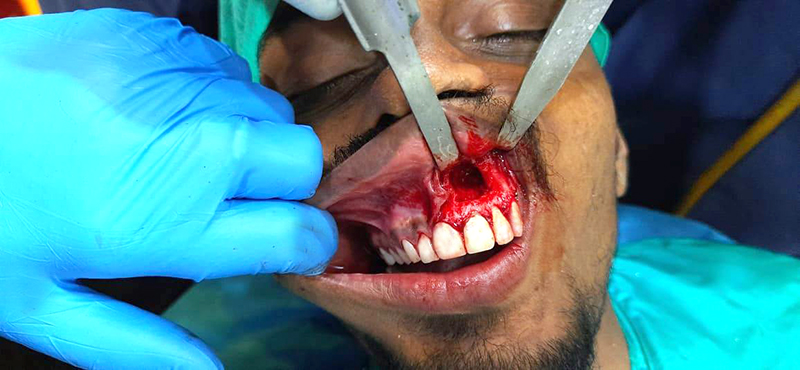
Dentigerous cysts:
This soft cyst can be cured. Dentigerous cysts are commonly develops and found close to or above the crown of an about to erupt tooth.
Dentigerous cysts can be found through X-rays or CBCT. Removal of the cyst is recommended since the severity may affect the jaw nerves, adjacent teeth, surrounding tissues and may end up in significant problems and disability. Sometimes the tooth involved with the cyst also to be removed.
Cyst removal at the early stage is recommended as large cysts are more complex to treat and it can be a reason for high risk of complications.
Removal Surgery:
The surgery will last up to 90 minutes after administrating local anaesthesia, hence you will not feel pain. Depending on the concern, operation may be done under general anaesthesia or under sedation.
In some cases the removed cyst will be sent for biopsy testing.
